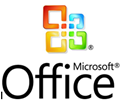SharePoint Workspace (SPW) 2010 Explained, Part 1 of 2
 This article is for readers who already have some experience with Microsoft Office Groove 2007 (Groove 2007) to better understand the usage, business values, and limitations related to the new feature, SharePoint Workspace, in SPW 2010. Those who are not familiar with how Groove 2007 works should first reference resources listed under Groove Workspace in Part 2 of this article.
This article is for readers who already have some experience with Microsoft Office Groove 2007 (Groove 2007) to better understand the usage, business values, and limitations related to the new feature, SharePoint Workspace, in SPW 2010. Those who are not familiar with how Groove 2007 works should first reference resources listed under Groove Workspace in Part 2 of this article.
As part of Microsoft Office 2010 Professional Plus, SPW 2010 brings much-needed SharePoint capabilities into the desktop. A key feature in SPW 2010 is the ability to synchronize SharePoint libraries and lists. Taking SharePoint content offline and synchronizing the content automatically and as needed is probably one of the most requested features in Office since the introduction of SharePoint Files Tool in Groove 2007. The SharePoint Files Tool in Groove 2007 can synchronize data with and only with a SharePoint document library. With SPW 2010, a content owner can create a so-called SharePoint Workspace and maintain a local copy of SharePoint libraries and lists and synchronize them with the corresponding items in an associated SharePoint site. SPW 2010 is the rich client for SharePoint 2010. And the relationship between a SharePoint Workspace and SharePoint is similar to how Outlook relates to Exchange.
There are other important changes introduced in SPW 2010. The Ribbon, shown below as the UI, provides a user experience that is consistent across all solutions in the Office family. InfoPath 2010 is now the form designer for all forms in SPW 2010. Both Discussion and List tools in SPW 2010 are based on InfoPath. In the Documents tool, users now can drag and drop items like they do in Windows Explorer. For quick and frequent access, a user can drag a SharePoint Workspace to the desktop. To simplify the log-in process without compromising security, SPW 2010 now provides an SSO experience, employing Windows credentials to authenticate a user.
SPW 2010 can be considered as new capabilities (including Ribbon and SharePoint Workspace) and most Groove 2007 features together, and essentially a two-in-one package. SPW 2010, in my opinion, signifies a major, strategic investment from Microsoft in data synchronization with SharePoint. For those who live to Groove and Groove to live, yes, most Groove functions and features are still available within SPW 2010 and life is good. Above all, SPW 2010 is to effectively address the business needs for accessing libraries and lists of a SharePoint site offline with a rich desktop client, while maintains high mobility for collaborating in a dynamic, ad hoc fashion with team members who are both within and outside of an organization.
Notice that there are products and features which are NO LONGER AVAILABLE in SPW 2010, including:
- Groove Data Bridge
- Groove Form designer
- Traffic indicator about outbound/inbound bytes
- Ability to change permission levels of Manager, User and Guest in a SharePoint Workspace
- Grooveclean.exe
- Audio chat
More specifically:
- In SPW 2010, one cannot add a Groove form since the tool is not available. For a workspace with a form developed with Groove Form available in Groove 2007, at least one workspace member with the form must run Groove 2007. To ensure a form solution with forward compatibility with Microsoft SharePoint platform, InfoPath is the way to go.
- A workspace manager cannot change permissions assigned to member roles, i.e. Manager, Participant, and Guest in a 2010 version of Groove workspace. A workspace manager can however change permissions of a role in 2007 (or earlier) workspaces. As discussed in Part 2, in SPW 2010 the default version of a Groove workspace is 2010 and a user can change it to 2007 version at workspace creation time.
- So it is said, if you know grooveclean.exe, you may be a Grooveneck. In SPW 2010, you can’t find grooveclean.exe and the equivalent function is now as a command line switch. The new saying is “If you know groove.exe /clean, and run it only after shutting down SPW 2010 and her process, you may be… no, you are a Grooveneck.”
One interesting fact in SPW 2010 is workspace members can only be promoted. This rule applies to any workspace member who is uninvited from a workspace and then re-invited to the workspace. For example, a participant who is uninvited from a workspace can be re-invited to the same workspace only as a participant or manager. (Continued in Part 2)
